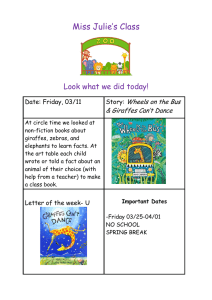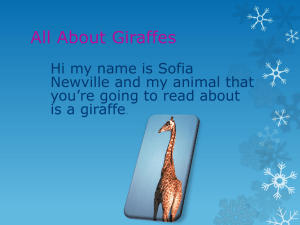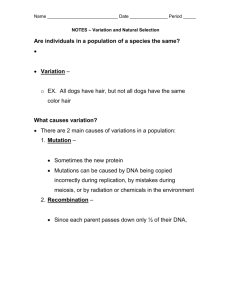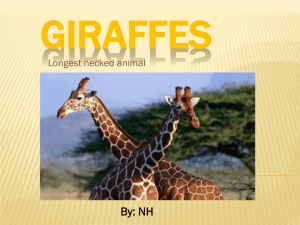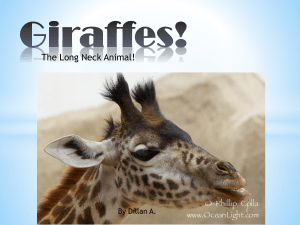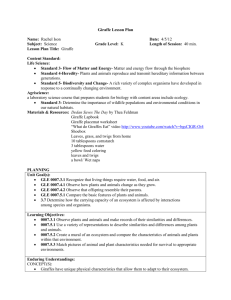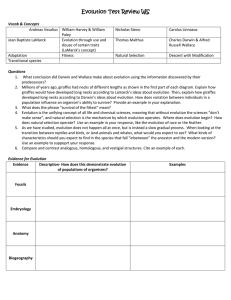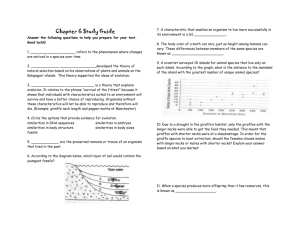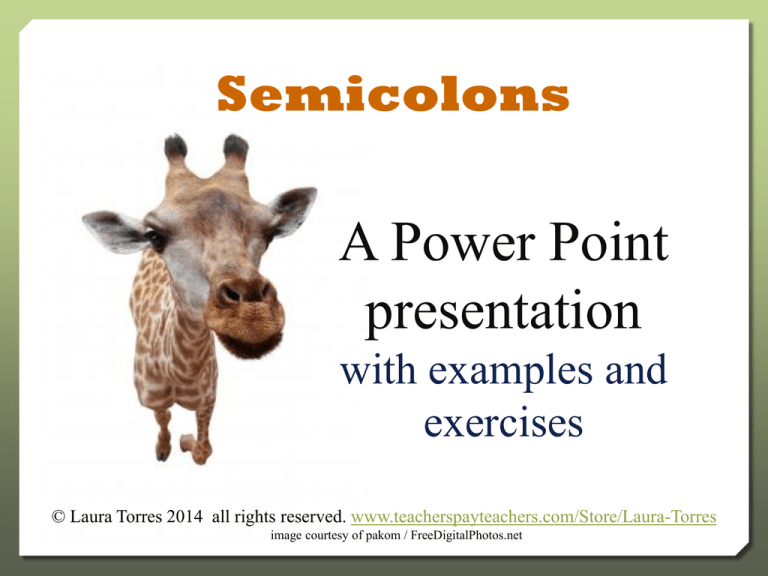
Semicolons
A Power Point
presentation
with examples and
exercises
© Laura Torres 2014 all rights reserved. www.teacherspayteachers.com/Store/Laura-Torres
image courtesy of pakom / FreeDigitalPhotos.net
When do I use a
semicolon?
Use a semicolon to join two independent
clauses that are closely related.
Use a semicolon to divide items in a series
when one or more of the items contain
commas.
Use a semicolon to join two
independent clauses (complete
sentences) that are closely
related.
Giraffes are the tallest mammal
in the world; their legs are taller
than an average man.
The two clauses in the sentence are
independent. Each can stand alone as a
complete sentence.
image courtesy of anankkml / FreeDigitalPhotos.net
Correct: A baby giraffe can stand up half an hour
after birth; it can run after only ten hours.
Both clauses are independent clauses.
Incorrect: A baby giraffe can stand up half an
hour after birth; and it can run after only ten
hours.
The second clause is a dependent clause. It can’t stand
alone as a sentence.
Incorrect: A baby giraffe can do amazing things
such as; run after only ten hours.
Both clauses are dependent clauses. They can’t stand alone
as sentences.
Use a semicolon with two complete sentences
joined by a transitional expression that functions
as a conjunctive adverb.
A giraffe’s long neck helps it spot predators and find food
in the treetops; however, its neck is too short to reach the
ground.
To get a drink from a water hole, giraffes must bend down
in an awkward position with their legs spread;
consequently, this makes them vulnerable to predators.
Both clauses must still be independent in order to use a semicolon.
Correct: Giraffes are usually silent, but they can make
sounds; for example, they can hiss, whistle, and
bellow.
Both clauses are independent clauses.
Incorrect: Giraffes are usually silent, but they can
makes sounds; for example, hissing, whistling, and
bellowing.
The second clause is a dependent clause. It can’t stand alone as a sentence.
Common Conjunctive Adverbs
Accordingly Consequently Finally For example
Furthermore However Indeed Moreover Nevertheless
Otherwise Subsequently Therefore Thus
Use a semicolon to divide items in
a series when one or more of the
items contain commas.
Giraffes are found in
Africa in savannas, with
coarse grass and
scattered trees; grassland,
with perennial grasses; or
open woodland, with
low-density forest,
shrubs, and grasses.
.
image courtesy of anankkml / FreeDigitalPhotos.net
Incorrect: Giraffes are found in Africa in
savannas, with coarse grass and scattered trees,
grassland, with perennial grasses, or open
woodland, with low-density forest, shrubs, and
grasses.
Incorrect: Giraffes are found in Africa in
savannas; grassland; and open woodland.
Incorrect: Giraffes are found in Africa in places such as;
savannas, grassland, and open woodland.
Choose the sentence that is punctuated correctly:
1 a. Giraffes have some things in common with cows such as;
they have several stomachs and make mooing sounds.
b. Giraffes have some things in common with cows; they
have several stomachs and make mooing sounds.
2 a. Leaves, including the favorite acacia leaves; also supply
water for giraffes.
b. Leaves, including the favorite acacia leaves, also supply
water for giraffes.
3 a. A giraffe can sprint 35 mph; furthermore, a giraffe can run
10 mph for an hour or more.
b. A giraffe can sprint 35 mph, furthermore; a giraffe can run
10 mph for an hour or more.
Choose the sentence that is punctuated correctly:
1 a. Giraffes have some things in common with cows such as;
they have several stomachs and make mooing sounds.
b. Giraffes have some things in common with cows; they
have several stomachs and make mooing sounds.
2 a. Leaves, including the favorite acacia leaves; also supply
water for giraffes.
b. Leaves, including the favorite acacia leaves, also supply
water for giraffes.
3 a. A giraffe can sprint 35 mph; furthermore, a giraffe can run
10 mph for an hour or more.
b. A giraffe can sprint 35 mph, furthermore; a giraffe can run
10 mph for an hour or more.
4 a. In addition to six-foot legs, a giraffe has these amazing
features: plate-size hooves, which help protect their
young, a two-foot long heart, which weighs 20 pounds,
and a 21-inch tongue, which helps to pluck leaves.
b. In addition to six-foot legs, a giraffe has these amazing
features: plate-size hooves, which help protect their
young; a two-foot long heart, which weighs 20 pounds;
and a 21-inch tongue, which helps to pluck leaves.
5 a. No two giraffes have the same spot pattern, but giraffes
from the same area have similar patterns.
b. No two giraffes have the same spot pattern; but giraffes
from the same area have similar patterns.
4 a. In addition to six-foot legs, a giraffe has these amazing
features: plate-size hooves, which help protect their
young, a two-foot long heart, which weighs 20 pounds,
and a 21-inch tongue, which helps to pluck leaves.
b. In addition to six-foot legs, a giraffe has these amazing
features: plate-size hooves; which help protect their
young; a two-foot long heart, which weighs 20 pounds;
and a 21-inch tongue, which helps to pluck leaves.
5 a. No two giraffes have the same spot pattern, but giraffes
from the same area have similar patterns.
b. No two giraffes have the same spot pattern; but giraffes
from the same area have similar patterns.
The End
THE ORIGINAL PURCHASER OF THIS DOCUMENT IS GRANTED PERMISSION TO REPRODUCE THE PAGES IN NEEDED
QUANTITIES FOR THE PURCHASER'S CLASSROOM ONLY. MINOR EDITING IS ALLOWED; THE DOCUMENT REMAINS
UNDER COPYRIGHT EVEN WHEN EDITED.
DUPLICATION FOR OTHER CLASSES OR BY OTHER TEACHERS OR FOR USE IN WIDE DISTRIBUTION AS WITHIN A
SCHOOL DISTRICT OR ON THE INTERNET IN ANY FORM IS STRICTLY FORBIDDEN.
VIOLATIONS ARE SUBJECT TO THE PENALTIES OF THE DIGITAL MILLENNIUM COPYRIGHT ACT.
One classroom use only.
© Laura Torres 2013
Visit my Store at http://www.teacherspayteachers.com/Store/Laura-Torres for
more teaching resources!
image courtesy of pakom / FreeDigitalPhotos.net

